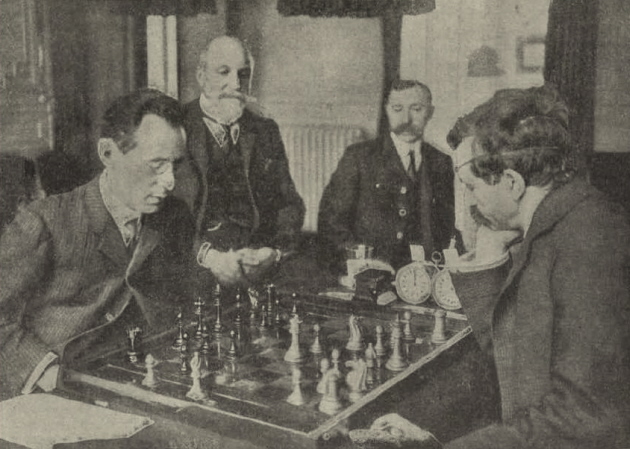You might recall that in 1899, David Janowsky, one of the leading masters of the late 1890s and early 1900s, issued a formal challenge to Lasker. Due to the disagreement regarding the number of games played, the negotiations were stalled and the match never took place.
However, Janowsky, who lived in France in the course of the next decade, found a wealthy patron willing to finance his chess career and a potential World Championship Match. Leo Nardus, an accomplished and wealthy Dutch painter was also an avid chess fan. He and Janowsky became close friends and he was willing to invest funds to bring him to the throne.

In 1909 he sponsored Janowsky’s exhibition match against Lasker, which ended in a tie (+2-2=0). Heartened by this result, Janowsky, with Nardus’ seal of approval, issued a formal challenge to Lasker. After lengthy negotiations, Lasker came to France for another exhibition match (which he won by a crushing margin: +7-1=2). The players agreed to the match in the case Lasker manages to retain his title in his match against Schlechter, which was just about to start.
After his match against Schlechter, which ended in February 2010, Janowsky got his shot at the World Championship title. Lasker was probably happy with the choice of his challenger. First of all, the match was played for the record prize fund, since Nardus invested 5000 franks of his own. Secondly, he has managed to avoid the meeting with his most dangerous rival, Akiba Rubinstein, who was playing brilliantly at a time (another sign of the power of the champion in those years). Finally, Janowsky was known as a combative player with a low drawing percentage; a complete opposite of Schlechter. Both Janowsky’s style and the result of the second exhibition match must have suited Lasker.
The match was played between 8 November and 8 December in Berlin. The first player to win 8 games would become the winner. The match proved to be an even easier stroll for Lasker then the second exhibition match played just a year earlier. With a dominant 8+0=3 performance, he whitewashed his opponent and managed to retain his title after only 11 games.
In contrast to his hard-fought match against Schlechter, this must have been a well welcomed (and well paid) stroll for him.

